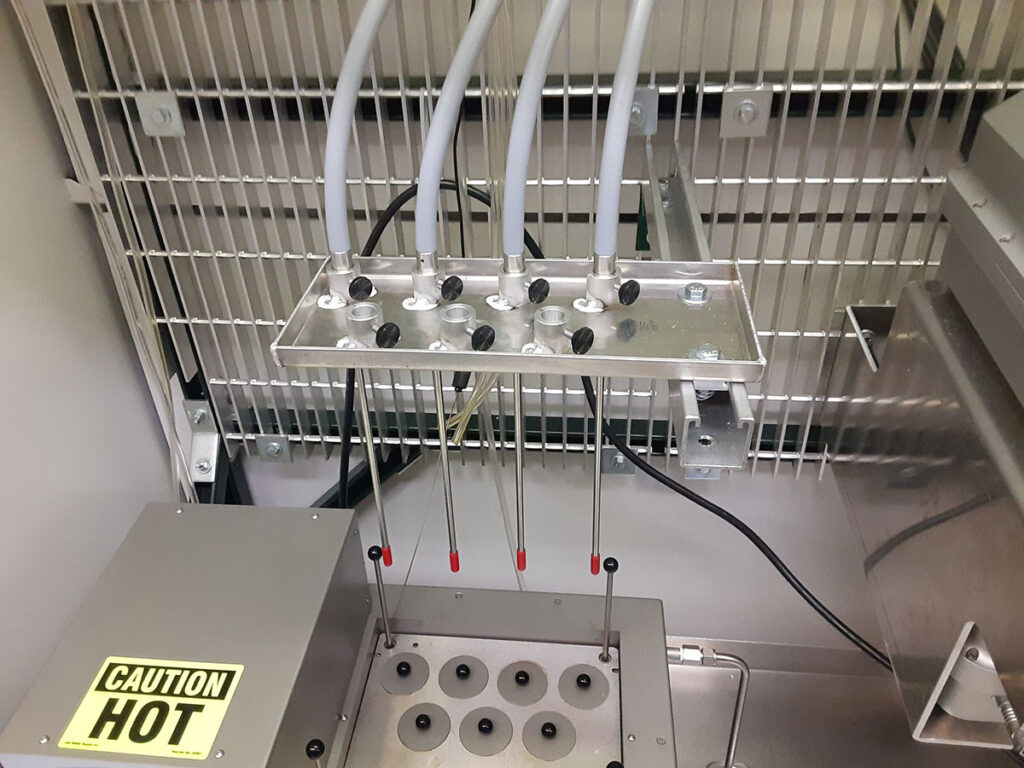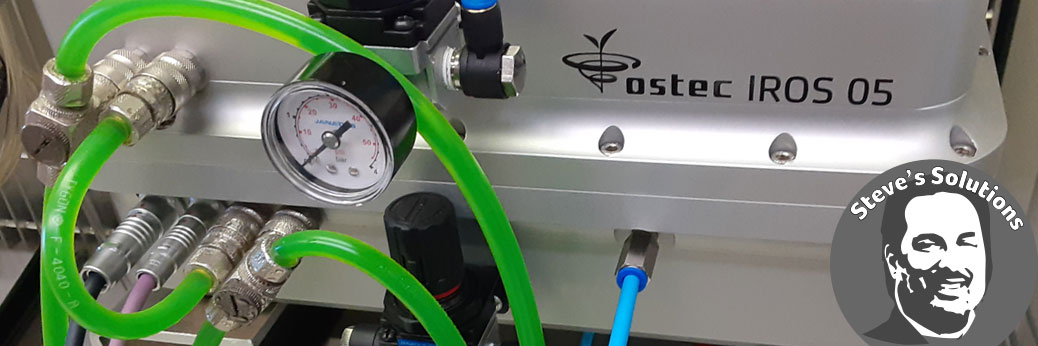Vibrational spectroscopic techniques provide powerful information for determining the chemical composition of a wide range of organic processes. The three most common techniques used for this work include FTIR, near-IR, and Raman spectroscopies.
FTIR directly probes the normal molecular vibrations of chemicals in a process. This technique is very sensitive to subtle changes in composition or other reaction properties. The mid-infrared vibrations probed by this technique typically provide very specific information with minimal sample interference. However, optical techniques needed to obtain mid-infrared spectra makes this technique more complex experimentally than the other two techniques. One limitation in implementing FTIR spectroscopy has always been related to the sampling needs for reliable, quantitative FTIR measurements. The best sampling method to reliably monitor is reaction often involves the use of Attenuated Total Reflectance (ATR) probes. The probe is inserted into the reaction and an IR-transmitting crystal located at the tip of the probe acts as the sample interface. While a range of IR-transmitting materials can be used, diamond is often the preferred choice since the probe can be aggressive cleaned between runs.
[WD_Button id=2788] [WD_Button id=2792]
Reliable FTIR measurements often incorporate Attenuated Total Reflectance (ATR) probes for measurement. Sampling is accomplished by having the ATR probe in contact with the sample – infrared light transmits through the fiber optic probe, through an infrared-transmitting crystal at the tip of the probe, and light reflected from the sample is returned back through the probe to the spectrometer for measurement. There are a wide range of ATR crystals that are available for measurements with the most common materials being diamond, Ge, ZnSe, and silicon.
Near-IR spectroscopy typically monitors the overtone and combination bands that are observed by FTIR spectroscopy. Sampling to obtain near-IR spectra is more straight-forward than typical FTIR setups since the relatively low cross-section for near-IR absorption allows for source light to be transmitted through or reflected from a reaction vessel. However, this low cross-section means that the sensitivity of near-IR measurements is limited and the reaction components and conditions must be heavily modeled to generate robust calibration curves. For complex systems, this also requires highly-skilled scientists with expertise in chemometrics to develop a robust measurement system.
Raman spectroscopy illuminates a reaction mixture with a laser and monitors the Raman-shifted light scattered off the reaction mixture. Similar to FTIR, the wavelengths and intensity of the Raman scattered light are characteristic of the composition of the mixture and can provide very specific information in reaction monitoring. These systems are an excellent choice for aqueous reaction systems – Barnett Technical Services works with a leading Raman company for material characterization situations where Raman would provide the best solution. One limitation of the Raman technique are potential interferences, especially with regard to fluorescence generated by the laser.
FTIR for Industrial Monitoring
Barnett Technical Services recently received a request from the R&D lab of an industrial company to monitor four different reaction vessels over a 5-day reaction period. These samples were relatively “dirty” and aggressive techniques would be needed to clear the ATR crystal between sample runs. Based on this sampling need, it was determined that FTIR combined with diamond ATR probes would provide the best sampling situation for these samples.
To provide for robust FTIR sampling, the customer was set up with two Ostec IROS 05i FTIR spectrometers. The Ostec IROS 05 mid-IR spectrometer is unique in the FTIR field since the system can accommodate two mid-IR probes in a single spectrometer. This allows a single vessel to be sampled in two different points or for two vessels to be sampled with a single spectrometer. For situations where another crystal material can provide some useful information, it also allows for two different probes in a single vessel with two different crystal materials. The detectors are thermoelectrically cooled with fluid from an adjacent chiller flowing through the green tubing. The spectrometers are purged with nitrogen (blue tubing) to remove atmospheric interferences. A photo showing these two spectrometers is shown below.

For these mid-IR experiments, the spectrometers were equipped with Ostec FiPOS ATR probes with a diamond tip. These probes provide reliable mid-IR performance an robust materials that permit cleaning between sample runs. A photo of the four probes with the reaction vessels used for these experiments is shown below.

Four Ostec FiPOS Diamond ATR Probes Used for Sample of Reaction Vessels Shown in Photo
Conclusions
FTIR, near-IR, and Raman spectroscopies are powerful tools for precise reaction monitoring. In this example, the use of two Ostec IROS 05 spectrometers equipped with four Ostec FiPOS diamond ATR probes allows for robust reaction monitoring of four reaction vessels set up in a five-day experiment. Additional implements may be easily configured as needed with this instrumentation.
Steve’s Solutions
To see more Ostec techologies in action, visit the Steve’s Solutions articles featuring this instrument.
 | Ramanomics: Quantification of Proteins, Nucleic Acids, and Lipids Inside Eukaryotic Cells |
 | FTIR for Industrial Process Monitoring |
For More information
OSTEC FTIR systems
Click here to view the IROS 05 page on the Ostec Website.
Ostec Website home page

Contact Us Online Form
Phone: 916-897-2441
Email: [email protected]

